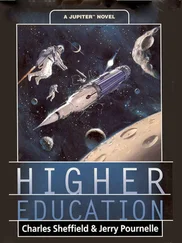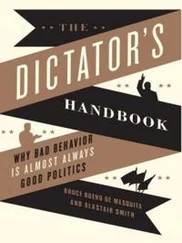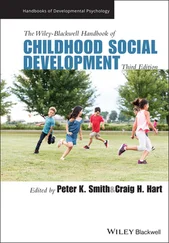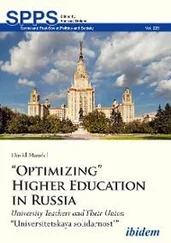OBE also motivates growth in individuals as well as the organizations, which we can understand easily. Suppose student A of an institute I was found taking an interest in all the activities associated with the course, and more importantly the faculty F was sufficiently capable
to motivate student A to participate in teaching learning activities, then Student A could develop a unique set of skills in addition to an excellent academic profile, and gain employment at the end of final semester. The candidate could have tremendous growth in the industry and could now also contribute to a number of social activities and perform corporate social responsibility (CSR) as well. Another student B at another institute I1 , might be even more intelligent than student A, both academically and in general aptitude, but might never have focused on skills, especially project‐based skills and a research‐based learning attitude. This candidate, too, might get employed but will have to face a lot of hardships and never progress in their professional career. This example motivates other students as well as institutes to follow the OBE approach.
3.3.1 OBE versus the Traditional Education System
We have had discussions with many subject experts in various courses, who have been imparting technical and science education for the last 40 years or more, and we found very interesting and contradictory responses about OBE. Most of them were of the opinion that there is nothing new in the OBE system but that all educational strategies have been followed for many decades. There were more than 65 participants from different diversities and streams of science, engineering, humanities, and technology in our discussions and we have included the general apprehensions, opinions, and our response defending OBE versus the old education system in Table 3.5.
Table 3.5 OBE versus old education system.
| Opinion/Apprehension regarding OBE |
Our response based on practicing OBE in a number of courses |
| OBE was already there and no need for mapping or assessing outcomes is felt even today (80% of the participants opined) |
In the past, competition was not tough and most of the candidates who performed above average and who had good academic records were absorbed by employers, mostly in public sectors. However, those who had a specific set of skills always saw tremendous growth in their career. Of course, there was no need for mapping learning outcomes with the objectives. |
| OBE is a customary framework (i.e. documented but not practiced) and nothing new (92% of the participants opined) |
We agree that there have been brilliant scholars, scientists, and other aca demicians in the past who have come through the traditional education system. However, time has changed and competition is cut‐throat, and selection committees look for uniqueness in the candidates, not just academic records. This is where the role of outcomes in terms of specific skill set, also known as employability skills, arises. The continuous monitoring of mapping between learning objective and SLOs in all program courses always helps in improve graduates. |
| OBE and its impact cannot be quantified (67% of the participants opined) |
This is not really true because there are number of rubrics and metrics by which the changes in students can be measured either directly or indirectly. The 360° feedback also provides reflection of students' performance in the workplace. |
| How does OBE improve the system? (74% of the participants opined) |
The 360° feedback from all the stakeholders helps in revisiting all the PEOs, POs, SLOs, and even the vision and mission statements of the organization, and then the POs are aligned to see the desirable changes in the students. |
| The outcome is nothing but employment! (89% of the participants opined) |
This statement is not completely correct. Though getting a job or employment is the result of an impactful outcome in the graduates, what is more important is the performance of the candidate after getting employed and achieving sustainability in growth of the self and the organization where the candidate is working. |
| The OBE framework is practiced in paperwork (98% of the participants opined) |
This opinion arises because most of the average performing academic institutes do not like that the OBE details and outcome‐attainment are maintained as paperwork, and they do not like doing this rather than actually practicing. This does not apply to good performing universities and organizations. It requires a lot of pragmatic approaches, best practices, and the involvement of learners, teachers, policy‐makers, and the management of the universities. |
Based on above discussion and response to the apprehensions raised, the following are the major advantages and disadvantages of the OBE system of education:
1 OBE and its impact are quantifiable and measurable, if suitable rubrics are genuinely used.
2 OBE encourages participation of candidates and all stakeholders in addition to continuous improvement in quality of the graduates.
3 OBE has the potential to contribute toward SDG 4 with the help of the practices used.
4 OBE enables candidates for lifelong learning, making them competent and able to strive toward excellence in their profession.
5 The major challenge is the participation of teachers and students, and this can be overcome by creating awareness about the importance and advantage of OBE to both learners and teachers.
There is great saying by an iconic spiritual monk, Swami Vivekananda, which goes “Education is the manifestation of perfection already in men.” This has much relevance to OBE since OBE gives opportunities for every student or candidate to manifest their potential. In another important quote “Each soul is potentially divine,” we find that the divinity is the eternal power that needs to be demonstrated, requiring the rubrics and practices to measure the quantum of manifestation in students. The million‐dollar question is whether OBE has the capability to bring the infinite potential demonstrable in students. The answer is a big YES because OBE and its hierarchical structure support the manifestation and make it observable.
3.4 Strategies to Enhance Student Learning Outcomes and Concluding Remarks
Based on background studies, current literature, and the research on the impact of OBE for sustainable growth in higher education, discussed in this chapter, we recommend some specific strategies toward true mapping between POs/SLOs and PEOs so that we can achieve sustainability in higher education sector. The strategies are outlined here according to the major factors of the OBE framework:
1 Formulation of vision and mission statements: In most mediocre academic organizations, the vision and mission statements are formulated and shared among all stakeholders just as a customary, especially in most of the Asian nations. The statements formulated actually determine the roadmap of the institutes and thus, while being developed, the stakeholders who are accountable and associated with the progress of institute and the students need to be taken into consideration. This requires 360° feedback from all stakeholders, namely employers, industries, students, alumni, parents, etc. The feedback will provide an exact estimate of where the institute stands and what more needs to be achieved. Accordingly, the goals of the institution can be set as LRGs and SRGs. The goals so written should be in sync with SDG 4 in all their components or expectations.
2 POs and PEOs: Similar to vision and mission statements, POs and PEOs of the institutes have to be articulated in accordance with those vision and mission statements and must be derived from the organization's SRGs and LRGs. The goals set are to be SMART (specific, measurable, achievable, result‐oriented, and timebound) so that the assessment can be made practically and plans made to overcome any gaps that might be present. Accordingly, POs and PEOs can be modified from time to time.
Читать дальше












